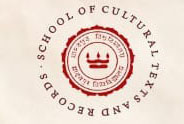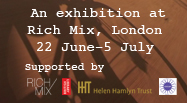
It is interesting how in my work, different erstwhile unconnected places and people and places have got connected through the act of shared listening. Here is my telephonic conversation with Nirmalendu Mitra Thakur on Bake’s kirtan recordings from Kenduli and Mongoldihi.

Seema Acharya is a renowned singer of kirtan. Her guru was the Late Chhabi Bandopadhyay, who in turn was a student of Nabadwip Brojobashi, who also taught Arnold Bake. She listens to Olly reading/singing Bake’s kirtan notation, and responds.

Oliver Weeks is a British composer and multi-instrumentalist with whom I have been collaborating since 2002. I gave him some of Arnold Bake’s kirtan notations to sing for me. Notations are a kind of translation in which a sound becomes a sign; in singing Bake’s notation, Olly was translating the script back to sound.

When Arnold Bake had recorded Indira Devi Chaudhurani, Rabindranath’s niece who was one of his best friends and confidante, in her home in Santiniketan, she was 83 but her voice was still steady and her memory intact. In 2016, Supriyo Tagore listened to his father’s aunt, who used to live with them at the close of her life, and memories happy and sad came flooding to his voice.

Fayazullah (stoker) from Damrasari, Hirpur Bazar, Sylhet became a story about a lost place and a found song. Looking for Damrasari, we went from place to place, met a curious bunch of people, almost reached the Indian border at Tamabil and recorded song and dance we weren’t at all expecting to find.

Sumati Devi is one of the few women who sing the Manoharsai in Manipur today.

Arnold Bake knew that students from Manipur used to come to Mainadal to their ‘tol’ to study the kirtan with the Mitra Thakurs. When he came to India for the last time in 1955, he wanted very much to go to Manipur, but couldn’t. What would he find if he went there then? How is kirtan performed in Manipur now?

There was an address Bake’s biographer, Bob van der Linden had given to me, for the house of Arnold Bake’s teacher of kirtan in Calcutta in the 1940s, Nabadwip Chandra Brojobashi. I went to look for the house in Beleghata in north Calcutta, and found it. I also found details of curious interest.

Laksmisvar Sinha had come to Santiniketan from Rarishal in Habiganj, Sylhet, now in Bangladesh. He was an explorer at heart who travelled to many lands and later became and a practising Esperantist, yet he remained rooted to his soil through his songs. I went looking for him in many places and found much more than this little archive can hold.

These are 17 clips of varying length from footage of 1994, in which there are kirtaniyasfrom Mainadal whom Arnold Bake had recorded in 1933, as well as some whom we met in 2014 and later. Hence, there is a continuity here, of almost a hundred years, of a family that has been singing kirtan for five centuries.

This was the materialisation of that trip to the festival of the bauls that Arnold Bake had been planning with Kshitimohan Sen ever since he came to Santiniketan for the first time in 1925. In 1932, his companion was not Kshitimohan however, but his trip with Corrie and others was facilitated by the District Magistrate, Gurusaday Dutt…

‘Every passion borders on the chaotic but the collector’s passion borders on the chaos of memories,’ wrote Walter Benjamin in ‘Unpacking My Library’.

The Berlin Phonogramm-Archiv catalogue describes Ranjan Shaha as Bettelnder Berufssänger, which suggests an itinerant singer who lives by madhukori or collecting alms. Ranjan Shaha was a honey-gatherer.

Kusum is described as a Bhumij woman, who sings a ‘jumur’ or jhumur, the most popular form of music of Purulia, Bankura and parts of Jharkhand. Bake recorded her in Kenduli on 16 January 1932. There is also a film of her singing and dancing, with her drummer partner.

From Gurudayal Malik to Mohan Singh Khangura and Madangopal Singh (orange)
Gurudayal Malik (1896-1970), from Karachi, taught English to school students in Visva Bharati. Between 10-17 April 1933, Arnold Bake recorded him in the asram; he sang four mystical songs in Punjabi and Urdu.

Between 24-26 November 1931, Arnold Bake had made recordings on cylinders and film of the Rash Utshob in Mongoldihi village in Birbhum, halfway between Suri and Santiniketan.I went to Mongoldihi on another 25 November, 84 years after Arnold Bake. I went with the painter Milan Mitra Thakur, whom I had first met in Mainadal.

These are the Niyomsheba songs or ritualistic singing in praise of Chaitanya and his five principal disciples, that the Mitra Thakurs of Mainadal sing for a whole month after Durga puja, starting from the eleventh day of the full moon, or Shoyon Ekadoshi. It lasts a month and ends on Utthan Ekadoshi. In contrast to the essentially public and amplified Nandotshob singing, these are private rituals of the family and intimate in nature.

During this trip to Mainadal in Birbhum, West Bengal, following sounds recorded by Arnold Bake in 1933 and Deben Bhattacharya in 1954, seeds of a relationship of sharing and trust were planted, which have borne fruit over these past eight or so years, leading to the digging into family archives by the Mitra Thakurs.

‘Moving with the Song: Loss and Longing in the Migrations of Bengal’ is a paper Moushumi presented at a Sound and Anthropology conference in St. Andrews University in 2006, convened by anthropologist Stephanie Bunn and sound scholar and artist Cathy Lane. This was one of our earliest attempts to talk about our field recordings.
On 29 October 2018, I was at the British Library sitting at the desk of Lead Curator of World and Traditional Music, Dr Janet Topp-Fargion, looking at some papers relating to Arnold Bake, the Dutch scholar of Sanskrit and Indian music, pioneer field recordist in the Indian Subcontinent in the 1930s and 40s, for my […]
This is a ‘lesson’ I had with Nirmalda, Nirmalendu Mitra Thakur, at the home of his cousin, Milan Mitra Thakur, both of the Mitra Thakur family of Mainadal, in Birbhum, who were recorded by Arnold Bake in 1933. The song I am drawn to is one we first heard during their Janmashtami and Nandotsav festival […]

Salamot Khan, who was Salamotbhai to us and was our friend and teacher, lived and died a ‘local man’ in Faridpur, in western Bangladesh in August 2015. Since his death, Faridpur, the place which gave to us some of the best of our songs–Ibrahim Boyati and Habib, Laila and Nuru Pagla, Jainuddin’s jari and Sadek […]
Mainadal is a village in Birbhum district, West Bengal, 215 km northwest of Kolkata. It is home of the famous Mitra Thakur family, known for their practice of kirtan around the shrine of Chaitanya Mahaprabhu, who has been their house deity since the beginning of Vaishnavism in Bengal, about 500 years ago. We reached Mainadal […]
The four recordings in this session come from an ongoing project on Manasamangal or the Song Cycle of the Snake Goddess, Manasa, which we have been recording, bit by bit, in different places in Bengal for some years. The idea is that over a period of time we will have different versions of the story […]
Bhakta Das has been coming to Kolkata for many years as a wandering singer, roaming from street to street, sleeping in the Dakshineswar Kali temple at night, and then going back to his house in the North 24-Parganas of West Bengal, near the Bongaon border with Bangladesh. We had heard him first time when his […]
We had this session in the courtyard of our late friend, Sadek Ali’s house in Ambikapur bazar, Faridpur. The evening before we had had another session inside his house. Like his mentor, the poet Jasimuddin, Sadek Ali bhai was a true lover of music, which is why he could open his doors to anyone who […]
Chandrabati Roy Barman and Sushoma Das were both born and brought up in the natural environment of song and rituals in villages in the Sunamganj area of Sylhet in eastern Bangladesh, a region known for its music and mystic poets. This was the time before Partition in 1947, for both women are now above 80. […]























 Moushumi will present at a workshop on THE ARCHIVE AS A KNOWLEDGE SITE: THE EXPERIENCE OF EUROPE AND INDIA, Organised by SCTR, JU in association with CNRS, France and IRN-AITIA.
Moushumi will present at a workshop on THE ARCHIVE AS A KNOWLEDGE SITE: THE EXPERIENCE OF EUROPE AND INDIA, Organised by SCTR, JU in association with CNRS, France and IRN-AITIA. Moushumi spent five days with students and teachers of the Tata Institute of Fundamental Research in Mumbai and also spoke at the Homi Bhabha Centre for Science Education. Her main talk was on The Travelling Archive
Moushumi spent five days with students and teachers of the Tata Institute of Fundamental Research in Mumbai and also spoke at the Homi Bhabha Centre for Science Education. Her main talk was on The Travelling Archive







